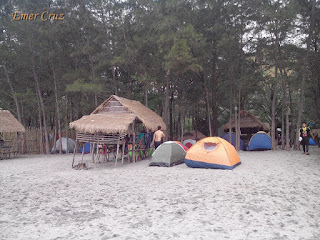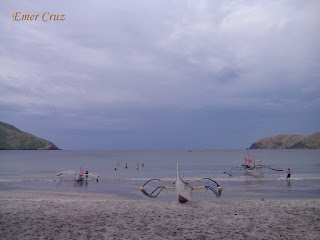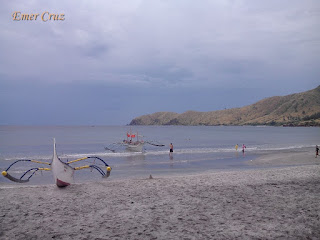When Mt. Pinatubo erupted in 1991, it spewed dark clouds of ashes that caused devastation to the province of Zambales particularly Sitio Nagsasa. Twenty Seven years have passed after the infamous eruption, the beachfront has now become a popular tourist getaway particularly for campers and adventure seekers known today as Nagsasa Cove. According to locals, the beach was not as beautiful before Mt. Pinatubo's eruption. Over the years, Pine trees has began to grow in the area, the once rocky shoreline is now composed of fine grain ash-grey sand that turns almost whitish during afternoon.
The beach cove is enveloped between the mountains of Cinco Pincos, Bira-Bira and Balingkilat directly facing the West Philippine Sea which is ideal for viewing the sunset. On the far north western portion, is the Anawangin Cove, Capones Island and nearby rock formations.
What I like mostly about this hidden paradise is that it doesn't get too crowded with other tourists. There are only a few campers, thus making it a perfect place to spend weekend getaway and commune yourself with nature.
 |
| The blogger with the Adventurous People |
How to Get There:
1. Ride a bus bound for Iba, Zambales.
2. Alight in San Antonio town proper.
3. You then need to ride/hire a trike to take you to Pundaquit Beach (this is the jump-off for boat ride towards Capones Island, Anawangin & Nagsasa beach)
**You can also do a traverse trail via Mt. Balingkilat which usually takes 12 hours of trek (the blogger hiked together with the Adventurous People).





No comments:
Post a Comment